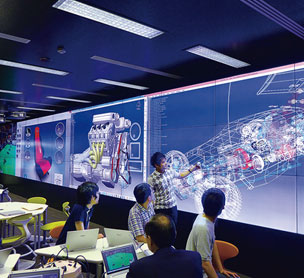- Industrial Area 4, Al Qusais, Dubai, United Arab Emirates
- uae@hawaiiledscreen.com
Blog Details
How to Install an LED Screen Display: A Step-by-Step Installation Guide

- Posted On 22 Oct 2024
#LEDwalls #LEDscreens #LEDvideowall #ledsignageUAE #ledscreensUAE #ledwallpanelsUAE #qualityledwallUAE #leddisplaypanelUAE #LEDoutdoorscreens #largevideowallUAE #ledscreenpanelUAE #ledscreendisplayUAE #leddisplayboardsUAE #indoorLEDscreenUAE #qualityhugeledscreen #ledwalldisplayscreen #LEDscreensuppliersUAE #LEDdisplayscreenUAE #qualityLEDvideowallUAE #qualityrentalledscreen #leddisplayscreenprice #LEDvideowallsuppliers #AdvertisingLEDscreenUAE #QualityOutdoorLEDscreens #topindoorrentalleddisplay #outdooradvertisingdisplay #bestoutdoorledscreenrental #Outdooradvertisingscreens #customleddisplaypanelUAE #ledscreendisplayboardUAE #digitalsignageleddisplay #advertisingscreenoutdoor #LEDscreensuppliersinDubai #leddisplayscreenpriceDubai #topindoorrentalleddisplayDubai #leddisplaypanelDubai #ledwalldisplayscreensDubai #customleddisplaypanelsDubai #indoorLEDscreenDubai #ledscreendisplayboardDubai #ledwallpanelsinDubai #QualityOutdoorLEDscreensDubai #leddisplaypanelDubai
How to Install an LED Screen Display: A Step-by-Step Installation Guide
An LED screen display can turn any space into a more vibrant visual center for business, advertising, or entertainment. However, to realize the highest performance and longevity of the installation, proper installation is greatly required. That is why, in this guide, we lead you through the fundamental steps to set up an LED screen display, along with helpful suggestions and tips that ensure everything will run smoothly.
Step 1: Choose the Right Location
Determine the appropriate location for your LED screen display. Consider the following:
Visibility: Place it in a spot where it will be easily visible from key vantage points.
Lighting conditions: Avoid full-glass or full-sun exposure on an indoor display for easier viewing
Mounting options: You may go with a wall mount, a stand, or as part of a custom installation.
Tip: Outdoor installations should have either protected weather or a screen rated for outdoor use.
Step 2: Power Supply Preparation
A stable, reliable power supply is needed for an LED screen display. Determine the correct voltage and load capacity based on the requirements of the display. Furthermore, ensure that you check the following conditions:
Validate the power consumption of the LED screen display.
There should be a ready access to power outlets or adequate cabling should be planned.
Install a power surge protector to guard the equipment.
Step 3: Mounting System Installation
The mounting system would play the most important role in the entire process. Be it wall mount, truss, or even free-standing assembly, ensure that:
The mount bears the weight of your LED screen display.
The structure is robust and stable, more so when dealing with larger and heavier displays.
The display is mounted at the right height and angle for the best view.
Tip: If your LED screen display is a large or modular one, you might need to refer more specifically to the installation guide for the manufacture with regards to mounting instructions.
Step 4: Connect the Display Components
If you're using a modular LED screen display, you'll have to assemble and connect the individual panels. Here's how:
Panel alignment : the edge of each and every panel should be aligned to make it smooth.
Connecting data cables: connect all the panels with the control system through the right kind of cables
Secure power connections: attach power cables to every module and connect them to the main source of power.
Suggestion: take care of the cable management in a way that there is no mess or interference to the display in the control system.
Step 5: Setup Control System
Once you have finished with the installation, the following issue that you will have to deal with is how to configure the controlling software for the LED screen display. Most screens come with a control box and software interface. Do the following:
Install controlling software in your computer or other device.
Configure display settings include: resolution, brightness, contrast, and refresh rate
Check communication channel between control system and LED screen display is smooth.
Tip: Make sure that you also obtain the software that supports your model of LED screen display and that firmware upgrades must be conducted.
Step 6: Testing the Display
This step involves testing the LED screen display after installation. It will help you to realize the areas that need adjustment and even perform a final setup test before making it operational totally. Observe these images:
Image quality: Pictures should be clear, with no signs of pixelation or color distortion.
Brightness and contrast: Adjust the display to be suitable for the place of installation, indoors or outdoor.
Data transfer: Test that the material does transfer it smoothly and uninterrupted, no lag, no buffering.
Tip: The test should as much as possible run for some hours to establish that the product is stable in the long run.
Step 7: Fine-Tuning and Maintenance
From this point, once powered up and ready to run, all final settings on the screen and to its environment will now be completed. These may consist of leveling adjustments to display at the correct angle and adjusting brightness. Furthermore, developing a schedule for preventative maintenance will ensure that the LED screen display remains in top state. This would encompass the following activities:
Cleaning the screen regularly to ensure dust and dirt free.
Checking the connections of every wire in place and cleaning out any debris deposited into the connection ports.
Upgrading the control software and firmwares from time to time.
Installing an LED screen display can be a pretty complex undertaking, but if you're clear about your planning and execution, it can be very smooth. With indoor or outdoor usage, the following will set up the display so that it shines through. A correct installation would both add to the aesthetic value and ensure that your LED screen display lasts and performs well.
